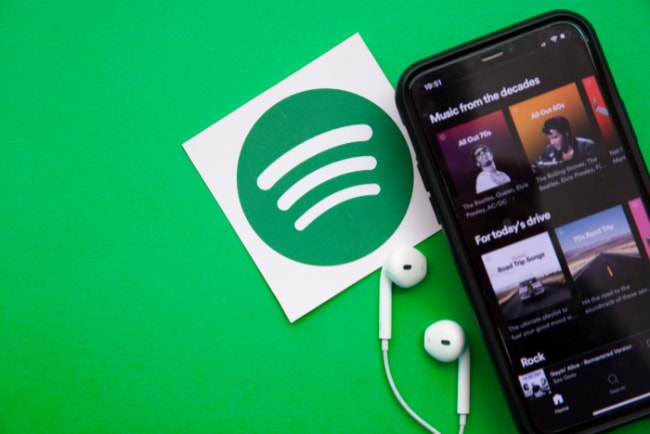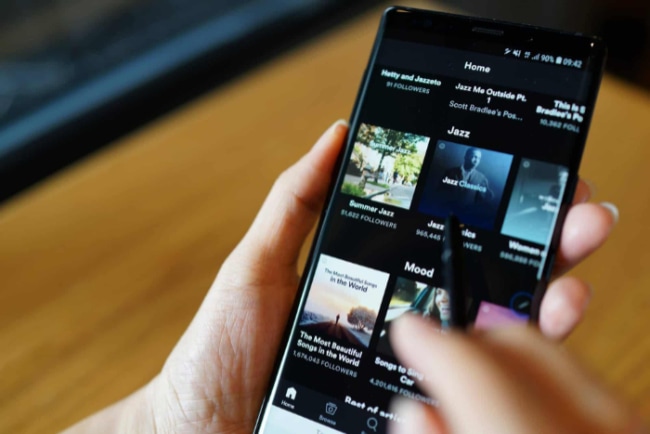Why Does Spotify Have So Many Ads? Costs Explained

Music pulses through the airwaves, a captivating melody fills the room, and just when the chorus is about to drop— an ad interrupts the flow. If you've ever used Spotify's free version, this scenario likely sounds all too familiar.
The frequent ads can prompt a myriad of questions, notably, why does this popular streaming service have so many interruptions?
The Business Model of Spotify
As we embark on this exploration, it's essential to start by examining the business architecture that defines Spotify. Knowing how the company makes money offers context for why advertisements are so prevalent on the platform.
Freemium Business Model
Spotify employs what is commonly known as a Freemium business model. This structure allows users to access a basic version of the service at no cost, which is supported by ads.
On the other side of the spectrum is Spotify Premium, a subscription-based service that offers an ad-free experience among other benefits such as offline listening and unlimited skips.
Revenue Streams: Ads Versus Premium Subscriptions
Ads and premium subscriptions are the two main avenues through which Spotify generates revenue. For users who opt for the free tier, advertisements become the currency.
These ads not only sustain the free model but also contribute to Spotify's overall revenue. Premium subscriptions, however, are the more lucrative of the two streams. Users pay a monthly fee for an enhanced, ad-free experience.
Importance of Advertisements in the Free Tier
The existence of a free tier serves a dual purpose. First, it acts as a magnet to attract a larger user base.
A considerable number of people are more likely to try a service that is free initially rather than committing to a paid subscription right off the bat. Second, once users are in the ecosystem, the frequency and placement of ads aim to encourage them to switch to the premium version, thus converting free users into paying customers.
Balancing Act Between Free and Premium Services
Maintaining a free tier and a premium tier necessitates a balancing act. Offering too many features in the free version could deter users from upgrading to Premium.
On the other hand, excessive ads or limitations might frustrate users and lead them to leave the platform altogether. Therefore, the structure and number of ads serve as a strategic element designed to optimize user conversion rates while also sustaining the free tier.
Targeted Advertising
Moving on from the overarching business model, it's important to focus on the specifics of the ads you hear on Spotify. One of the key factors that makes these ads unique is the method of targeted advertising employed by the platform.
What Is Targeted Advertising?
Targeted advertising refers to the practice of delivering ads to users based on various criteria such as browsing history, demographic information, and user behavior. Unlike random or generalized ads, these are personalized to fit the profile of the individual user, increasing the likelihood of engagement.
How Spotify Collects Data for Personalized Ads
Spotify gathers a wealth of information to facilitate targeted advertising. This data collection spans multiple dimensions, including but not limited to, listening habits, playlist creation, and user interaction with the app.
This allows Spotify to create a profile that aids in serving more relevant ads to the user, enhancing the chance for businesses to connect with potential customers.
Why Targeted Ads Are More Profitable
The efficiency of targeted ads often translates into higher profitability. Because the ads are more likely to resonate with the individual, there's a greater chance for conversion, be it clicking on the ad or making a purchase.
This makes targeted advertising a lucrative option for businesses, and by extension, for Spotify.
Regulatory Factors Impacting Targeted Advertising
Government regulations like the General Data Protection Regulation (GDPR) in Europe have an impact on how Spotify and other platforms conduct targeted advertising. User consent is now a necessary part of data collection for ad targeting, making transparency and user choice integral aspects of the advertising process.
Ad Frequency and User Experience
After understanding the economic motives and the methods of ad targeting, we must turn our attention to another crucial dimension—the actual experience of the user who listens to these ads. This leads us to the question of ad frequency and its effect on user satisfaction.
The Impact of Ad Frequency on Listener Experience
Anyone using the free version of Spotify knows that ads can appear quite frequently, sometimes disrupting the flow of music or podcasts. This frequent interruption can impact user satisfaction, as constant ad breaks might make listening less enjoyable or even irritating over time.
Spotify's Calculated Approach to Ad Placement
Spotify utilizes a calculated approach when it comes to inserting ads into the listening experience. The algorithm considers several factors, such as the length of listening session and the type of content, before deciding when to play an ad.
This is a strategic move to ensure that ads are not overly disruptive, while still frequent enough to encourage users to consider moving to the premium tier.
Encouraging Premium Subscriptions Through Ad Frequency
The prevalence of ads in the free version serves another purpose—it acts as a catalyst to promote premium subscriptions. Users who find the ad interruptions too cumbersome might be more inclined to switch to the ad-free premium version.
This serves as an upsell strategy, driving users from the free to the paid tier.
User Retention and the Risk of Over-Advertising
While ads are a necessity in the free version, overdoing them carries risks. Too many ads can lead to user dissatisfaction, causing some users to abandon the platform in favor of other services.
Therefore, Spotify has to strike a balance between the need to generate ad revenue and the imperative to keep its user base engaged and growing.
Comparative Analysis With Other Platforms

As we continue our investigation, it is valuable to step outside the confines of Spotify to look at how other music streaming services approach the question of advertising. By comparing Spotify with other platforms such as Apple Music, Pandora, and YouTube Music, we can gain a broader perspective on the role of ads in the streaming music industry.
Spotify Versus Apple Music
Apple Music takes a distinctly different approach from Spotify by offering no free tier at all. Instead, it provides users with a three-month free trial, after which a paid subscription is required.
This eliminates the need for advertisements entirely, thereby delivering an ad-free user experience from the outset.
Spotify Versus Pandora
Pandora, another popular streaming service, also offers a freemium model. However, it provides fewer features in its free tier compared to Spotify.
Pandora's ad frequency is relatively similar, but the service has experimented with interactive ads that allow users to engage with the ad to reduce frequency, offering a slightly different user experience.
Spotify Versus YouTube Music
YouTube Music also offers a freemium model but with a higher frequency of ads in comparison to Spotify. The platform relies heavily on video advertisements, making the experience quite different for users.
However, YouTube Music also offers a premium tier that removes these ads, much like Spotify's Premium offering.
The Trade-Offs of Ad Frequency and Subscription Costs
Each platform makes calculated decisions about how to balance ads and subscription costs. For instance, Apple Music avoids ads but requires a subscription, thus offering a premium service at a premium price.
In contrast, platforms like Pandora and YouTube Music aim to draw users in with free tiers but employ varying ad strategies to generate revenue and encourage premium subscriptions.
The Role of Licensing and Royalties
Last but not least, it's crucial to discuss the underlying costs associated with running a music streaming service like Spotify. Specifically, the role of licensing and royalties can't be overstated when talking about the prevalence of ads.
Understanding these financial obligations sheds light on why advertising is not just an option but often a necessity for Spotify.
How Spotify Acquires Music Rights
Spotify must secure the rights to stream music from record labels, independent artists, and other rights holders. This process involves complex negotiations and legal agreements, often resulting in Spotify having to pay substantial fees to license the music.
The Costs of Royalties
Each time a song is played on Spotify, a royalty must be paid to the rights holder. These costs can add up quickly, especially considering Spotify's extensive library and large user base.
The service has to generate enough revenue to not only cover these costs but also to turn a profit, which brings advertising into play as a vital revenue stream.
Different Royalty Rates for Free and Premium Tiers
It's worth noting that royalty rates differ between Spotify's free and premium tiers. The premium tier generally incurs higher royalty costs, which is offset by the subscription fees paid by users.
However, in the free tier, these costs must be balanced by revenue generated from ads.
Ads as a Mechanism to Offset Costs
Advertisements serve as a mechanism for offsetting the high costs associated with licensing and royalties. For users on the free tier, ads effectively “pay” for their listening experience.
While this might not cover all the costs, it certainly contributes a significant share to maintaining the financial viability of the platform.
Conclusion
Advertisements on Spotify serve multiple purposes, deeply rooted in both its business model and operational needs. Through a careful balance of targeted advertising and ad frequency, Spotify aims to create a revenue stream that also encourages users to upgrade to its premium service.
The approach may differ when compared to other platforms, each of which has its own unique business strategies and user experience considerations. Additionally, the financial imperatives of licensing and royalties further underline the importance of ads as a revenue-generating tool.
Thus, the ubiquitous ads on Spotify's free tier are not merely interruptions but are integral elements that sustain the platform's extensive offerings.


